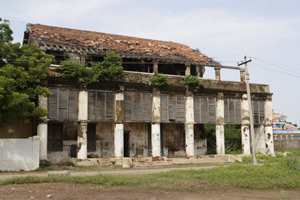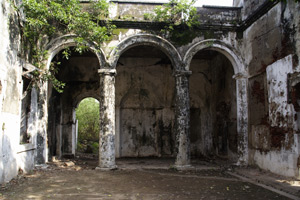Restaurering af historiske bygninger og studie af deres tidligere brug
Projekt af Kjeld Borch Vesth, museumsinspektør, Nationalmuseet
- Projektet er finansieret af anonymt dansk fond
Gennem Tranquebars 225 år som dansk koloni, blev en række bygninger opført – nogle eksisterer stadig. Flere af dem er truet på grund af dårlig vedligeholdelse, manglende lokale økonomiske ressourcer og fordi andre områder prioriteres af de regionale antikvariske myndigheder.
De sidste årtier er der kommet fornyet dansk interesse på området og der er blevet skabt en række initiativer for at redde bygningerne fra nedrivning. De sidste par år har det især været Foreningen Trankebar, som opstartede og delvist færdiggjorde ( i samarbejde med den indiske arkitekt Chella Pillai) restaureringen af en tredjedel af Fort Dansborg, mens de indiske myndigheder restaurerede de resterende to tredjedele af Dansborg. Foreningen er nu fortsat med en renovering af Nygade kirkegård.
Der er stadig en del bygninger der trænger til restaurering, blandt andet Guvernørens Hus, der blev købt af den danske krone i 1784 og har været igennem adskillelige forandringer. Gennem Peter Ankers guvernementsperiode fra 1786-1807 var den uden tvivl den mest spektakulære og vigtige bygning i byen. I dag er bygningen i en meget dårlig forfatning og man bliver nødt til at skride til handling hurtigt, hvis bygningen skal reddes.
Bygningsrestaureringerne vil blive baseret på antikvariske forundersøgelser således at bygningernes arkitektoniske historie kan blive optegnet og reflekteret i den endelige restaurering. Disse restaureringsprojekter giver mulighed for et samarbejde mellem danske og indiske antikvariske myndigheder og resultatet af restaureringer og fremtidigt samarbejde kan være forøget viden og praktiske evner såvel som udvikling af metoder til restaurering.

